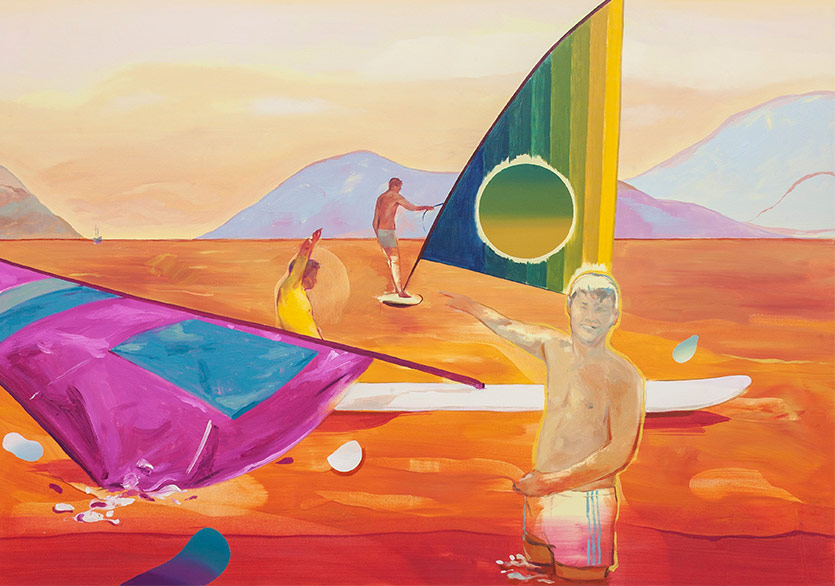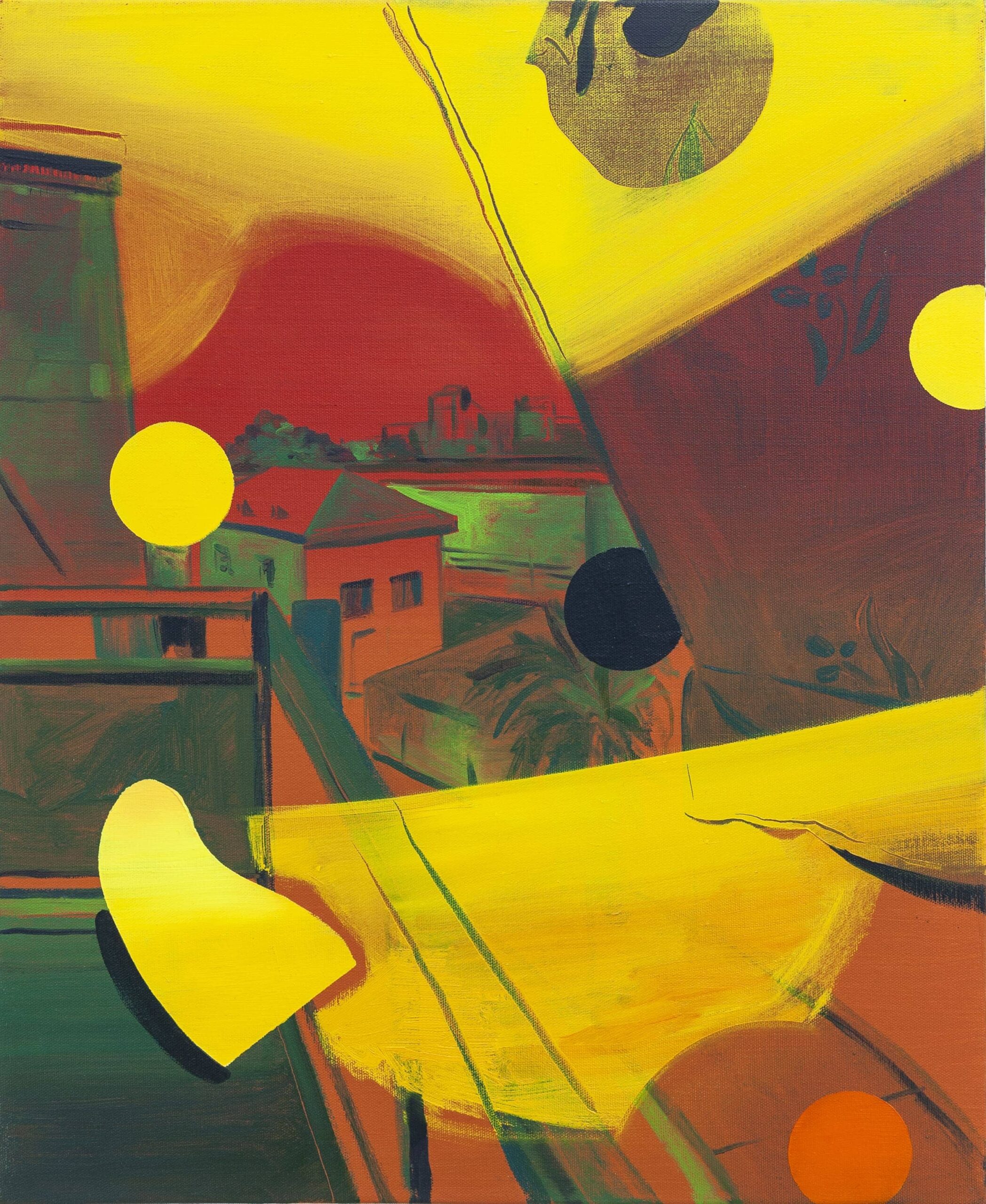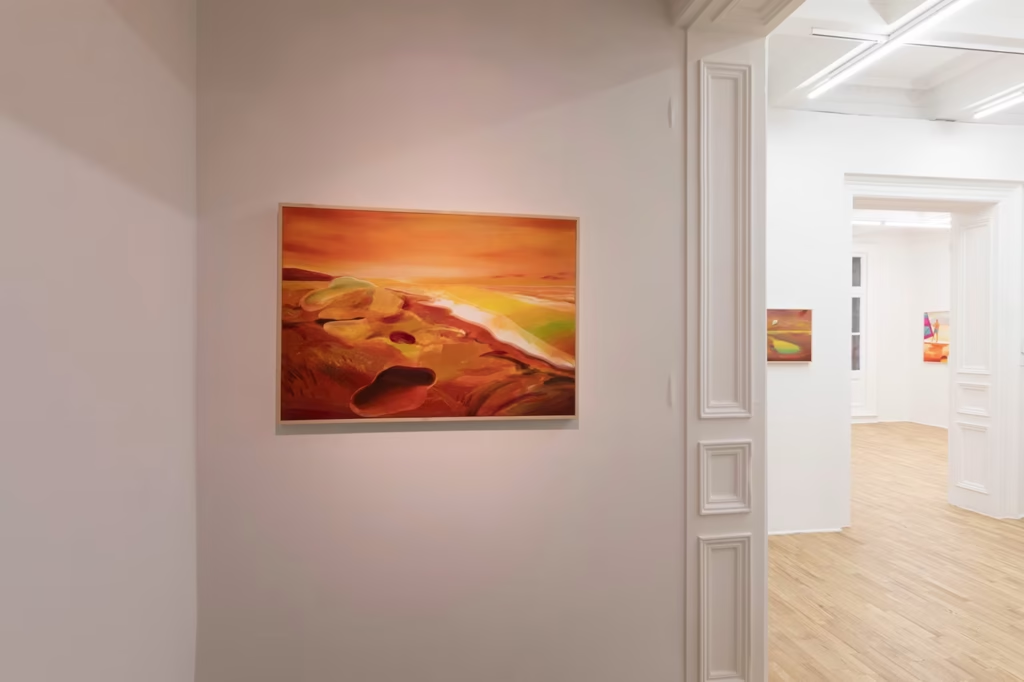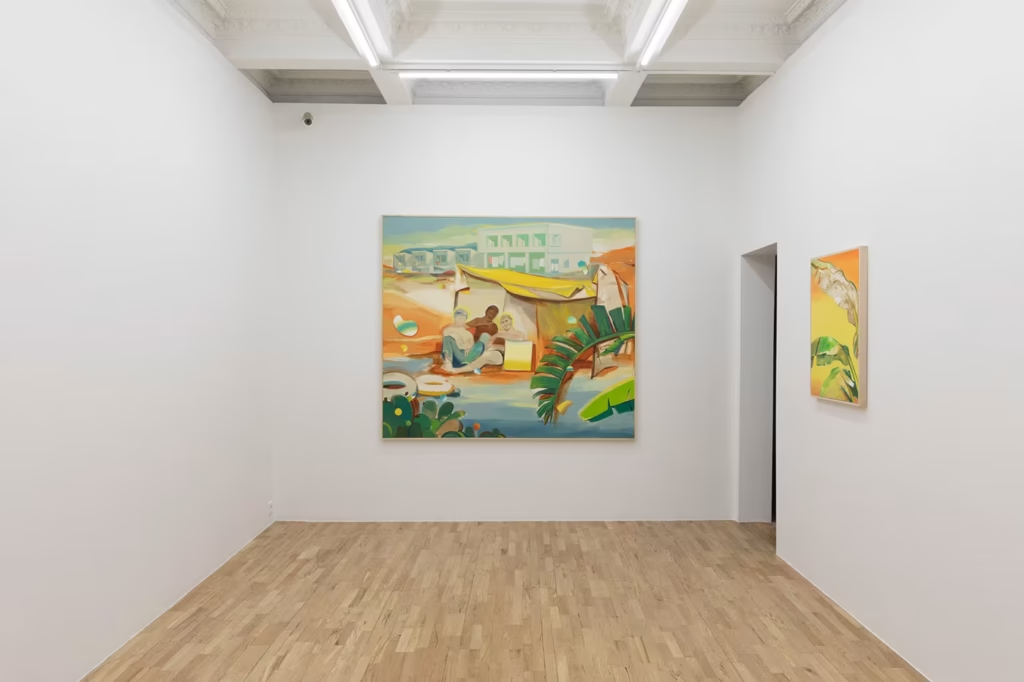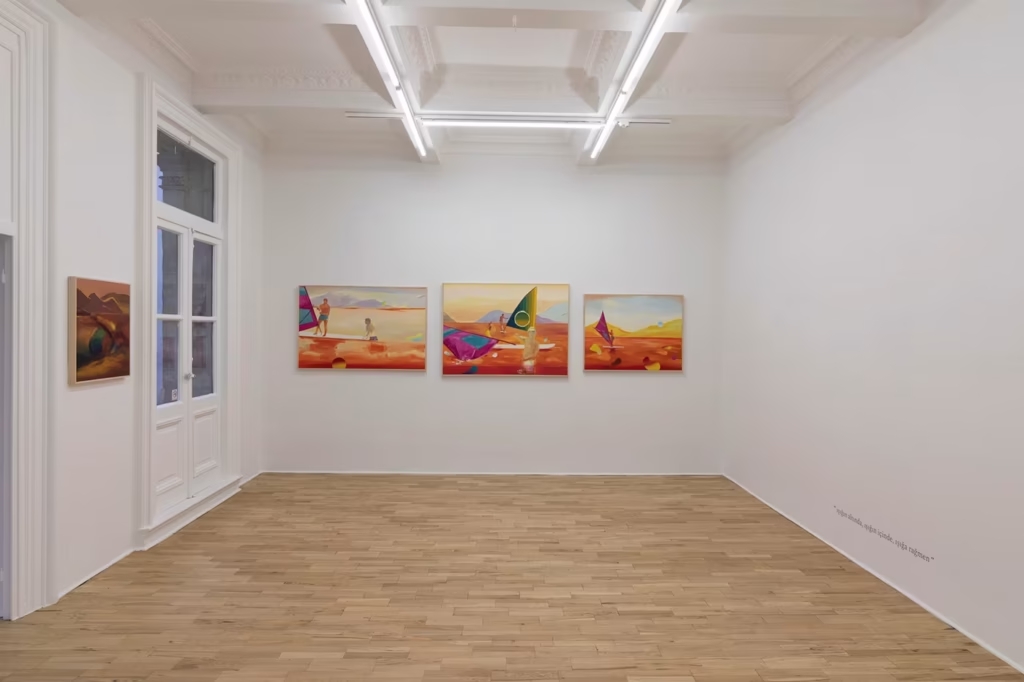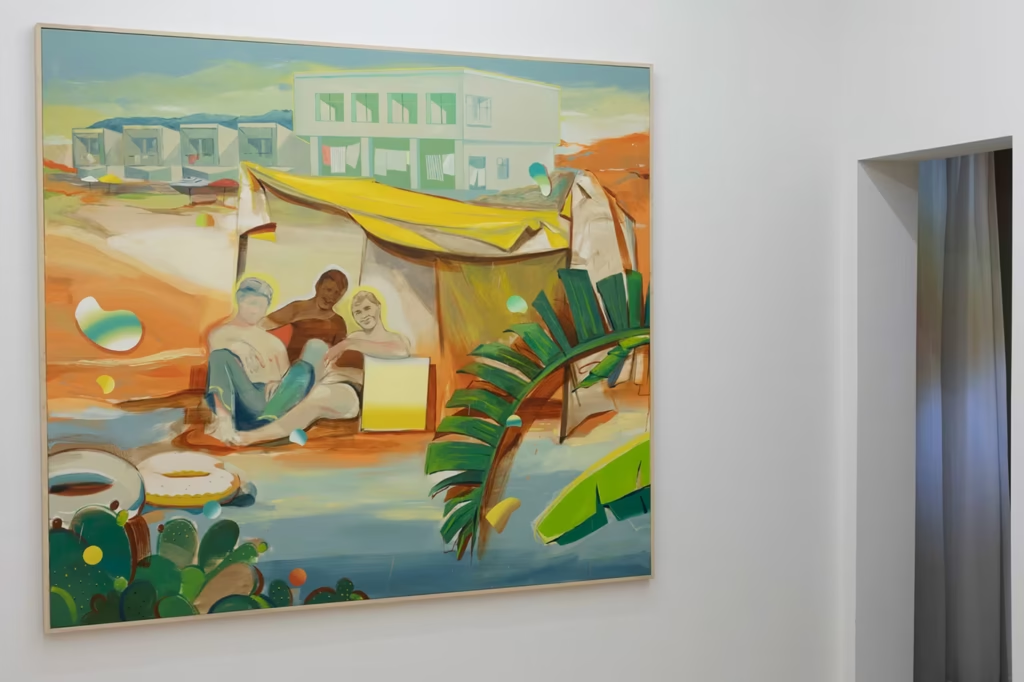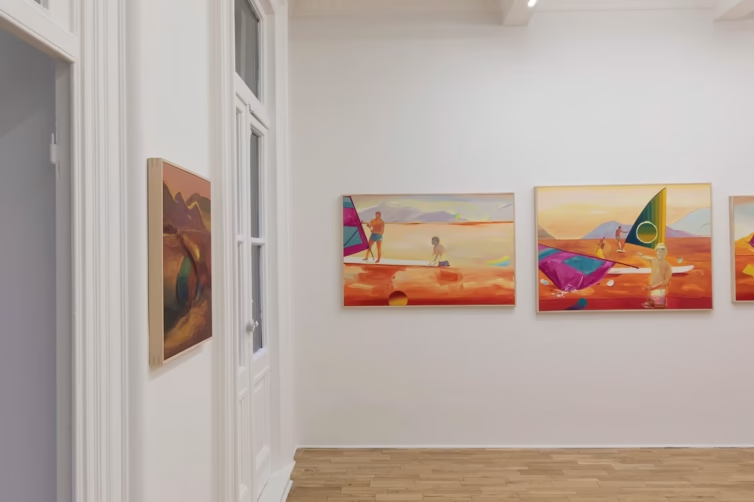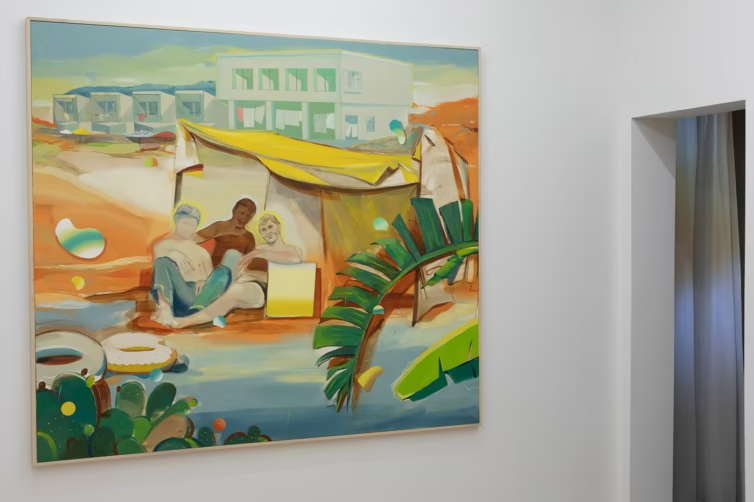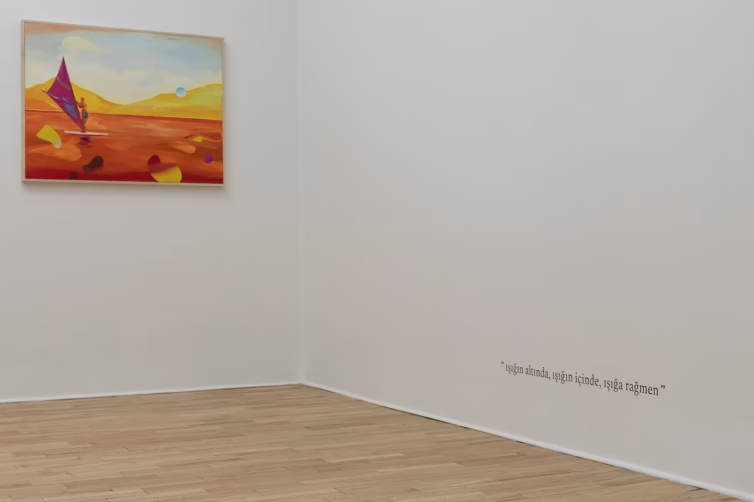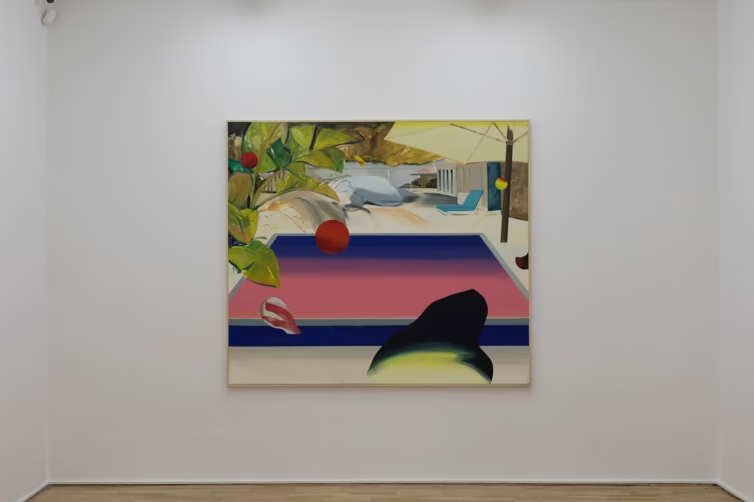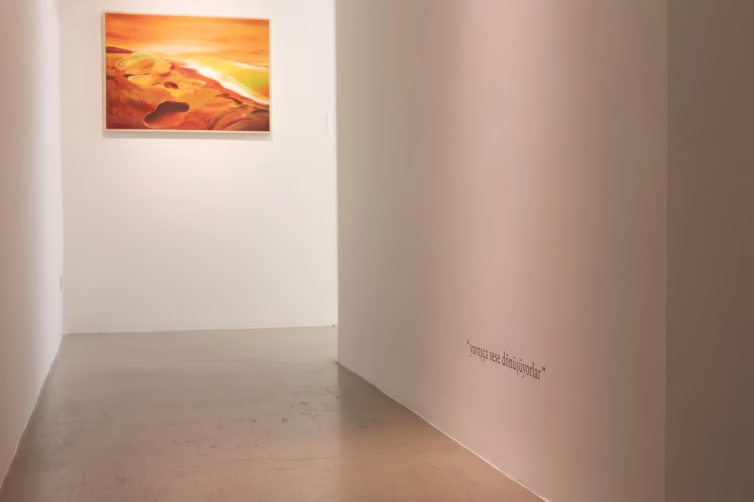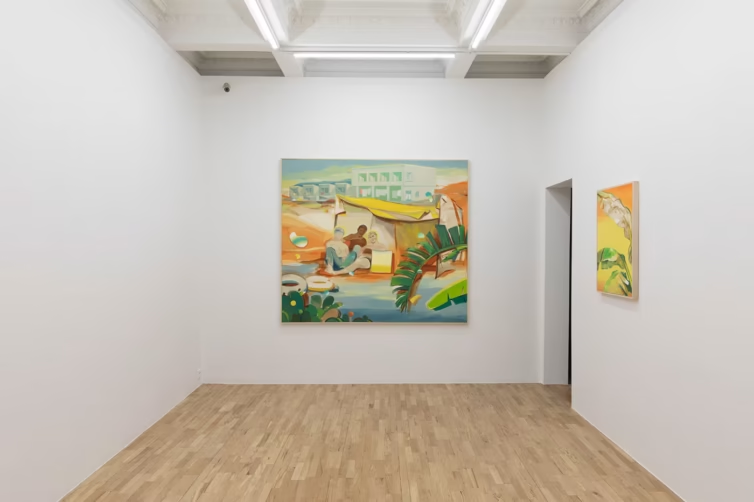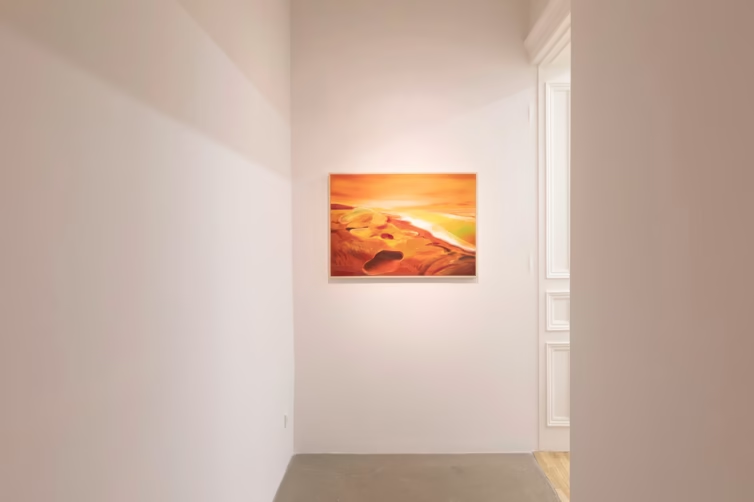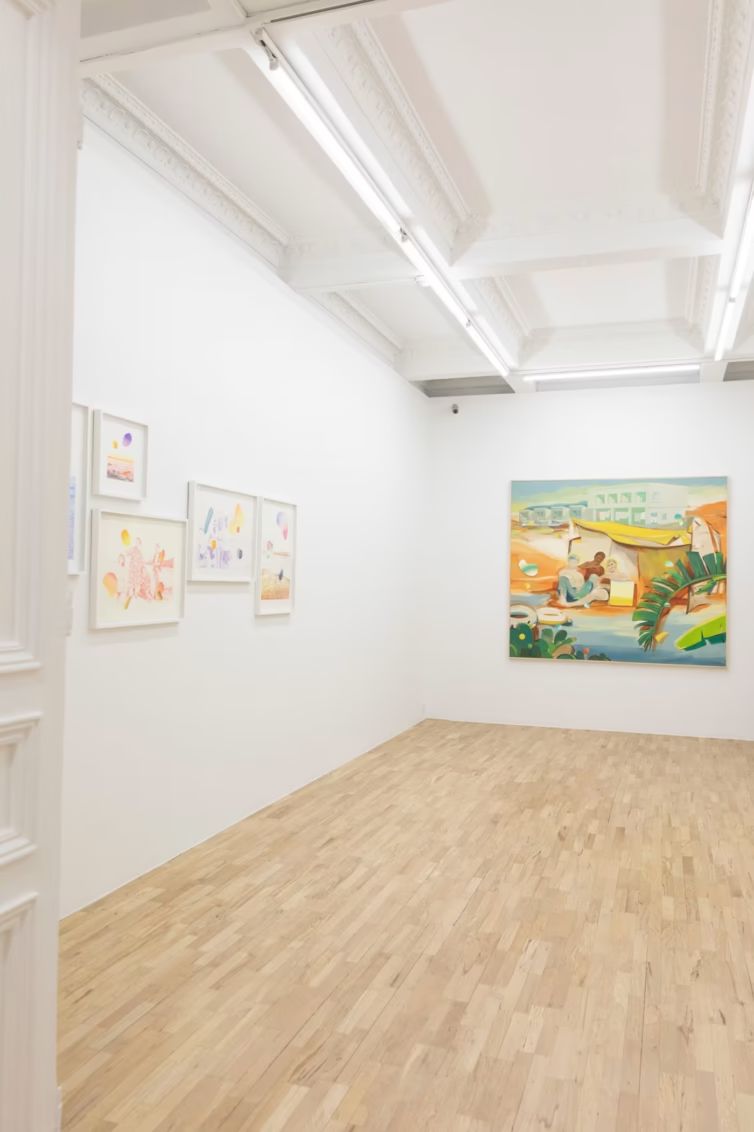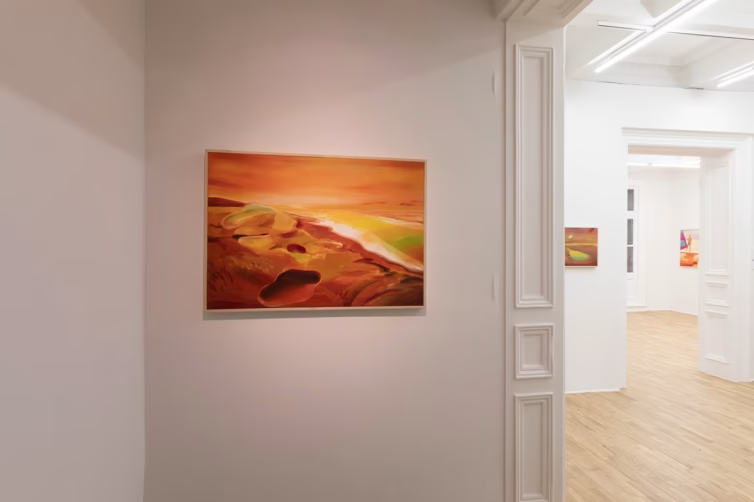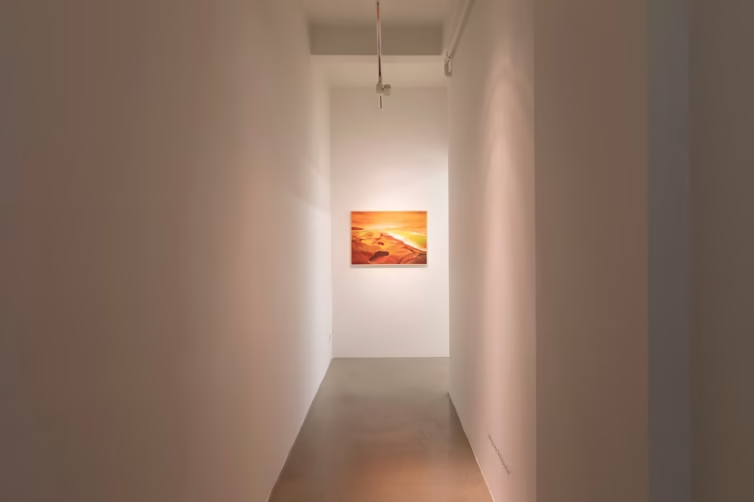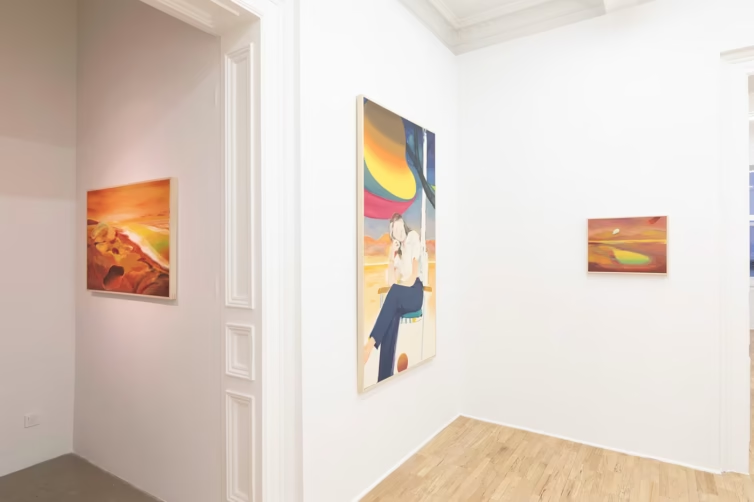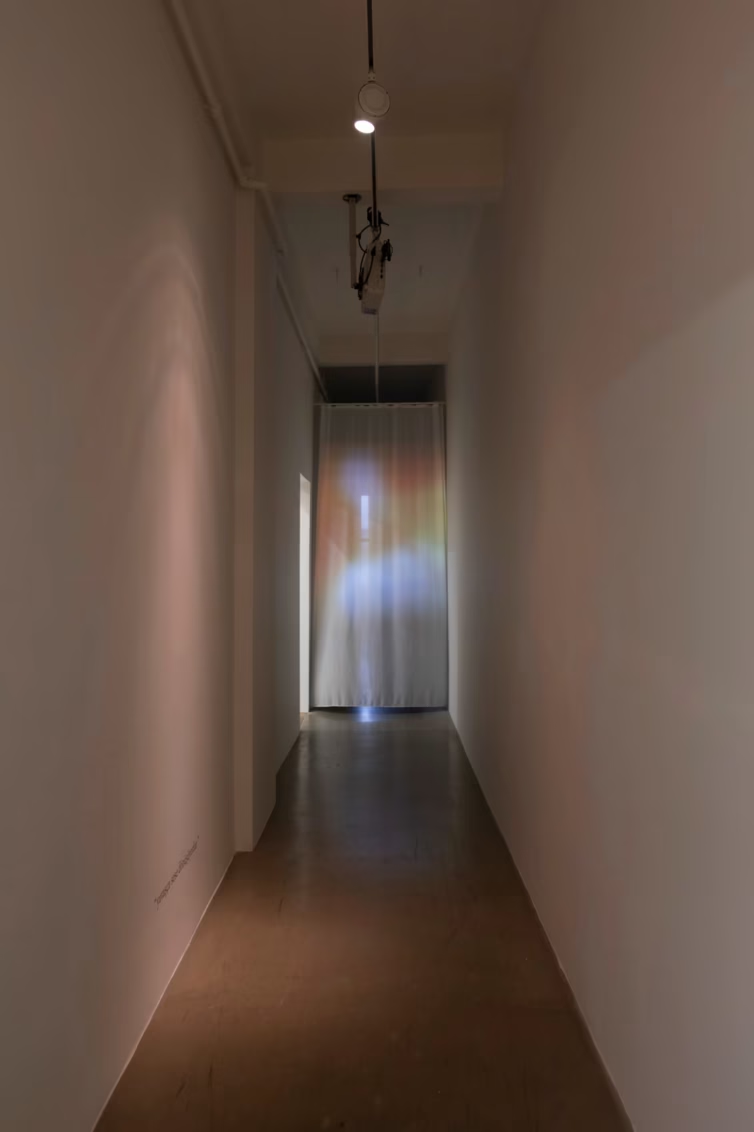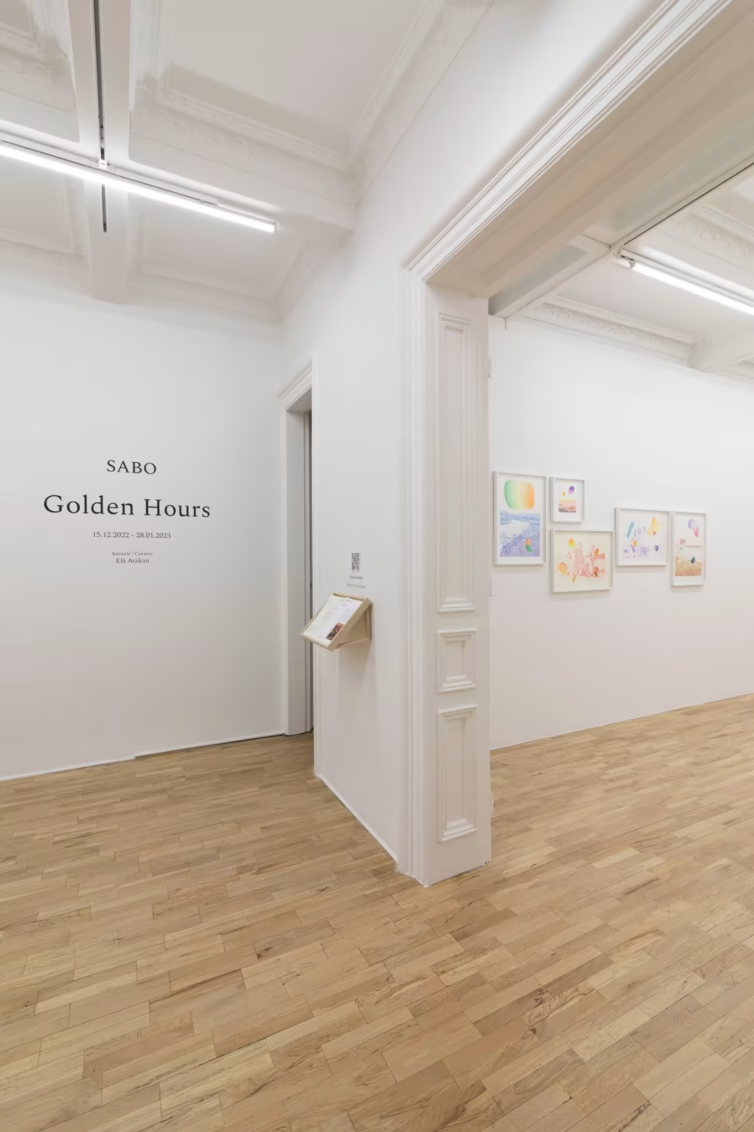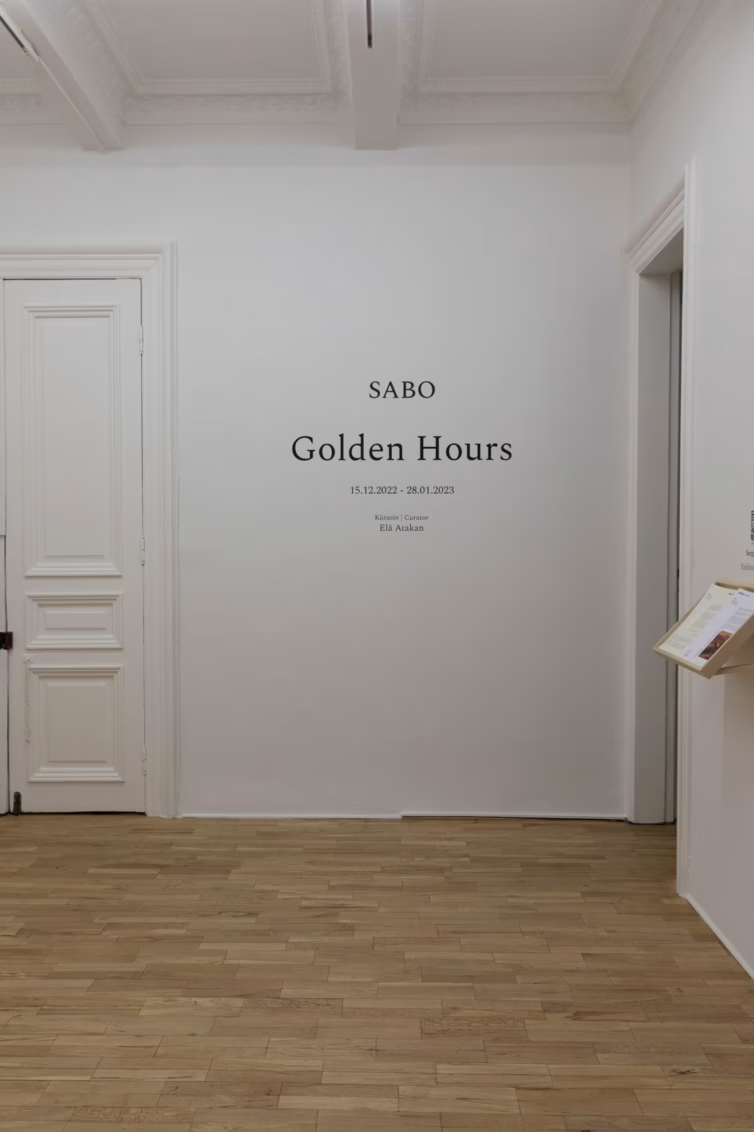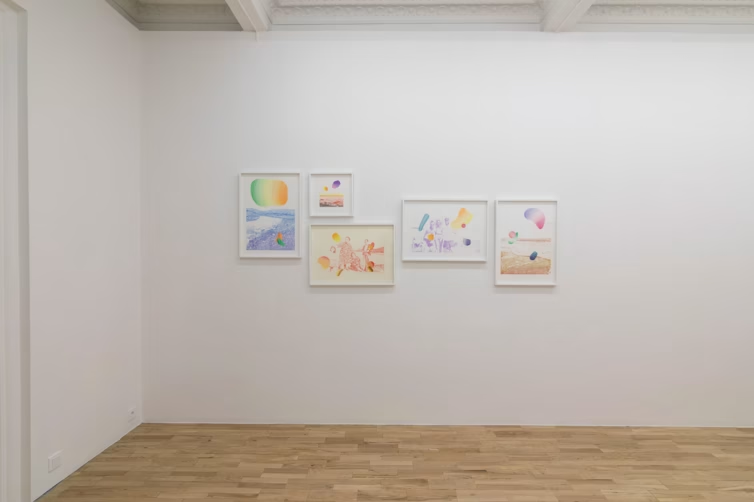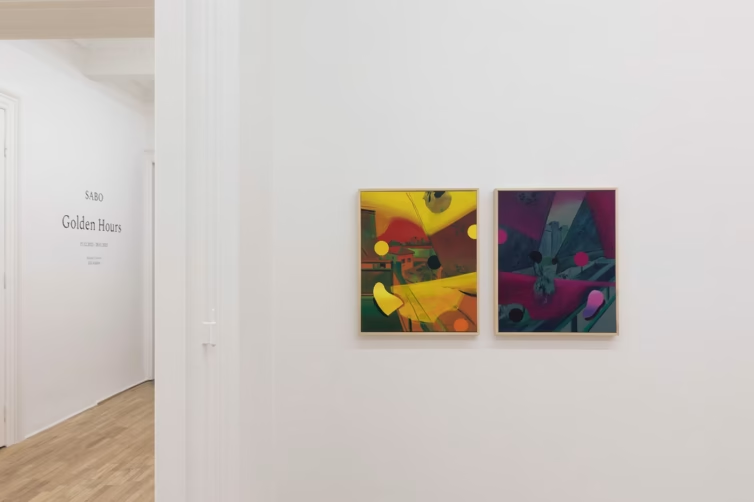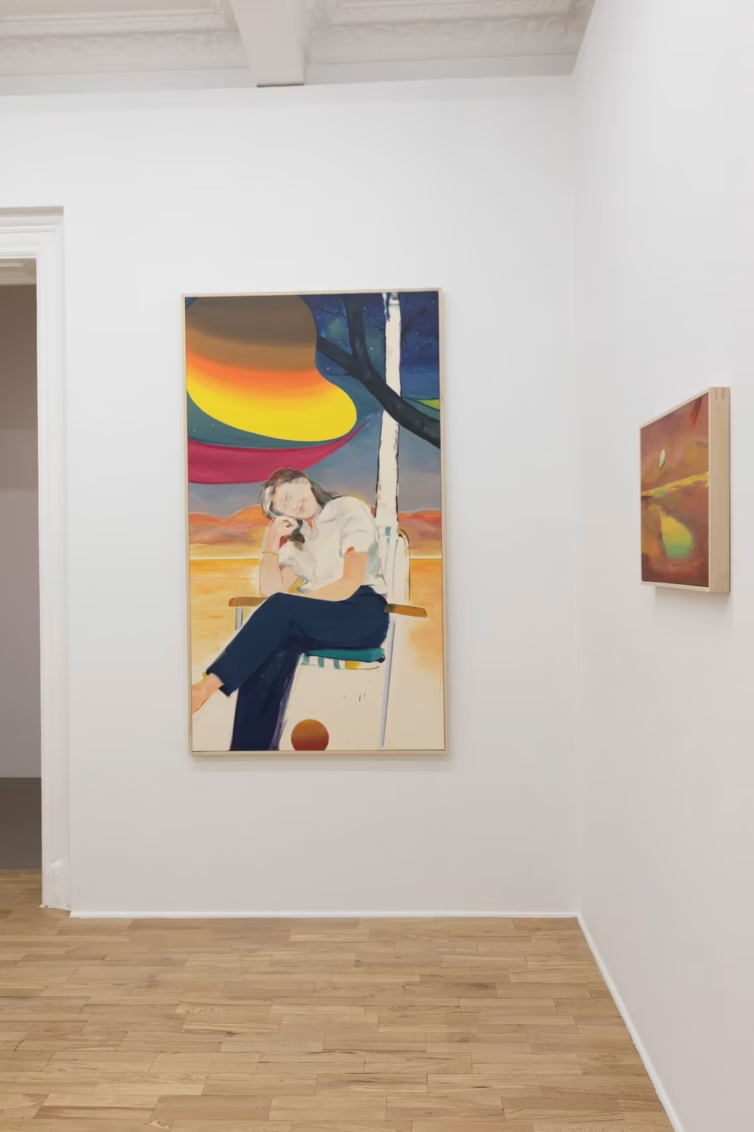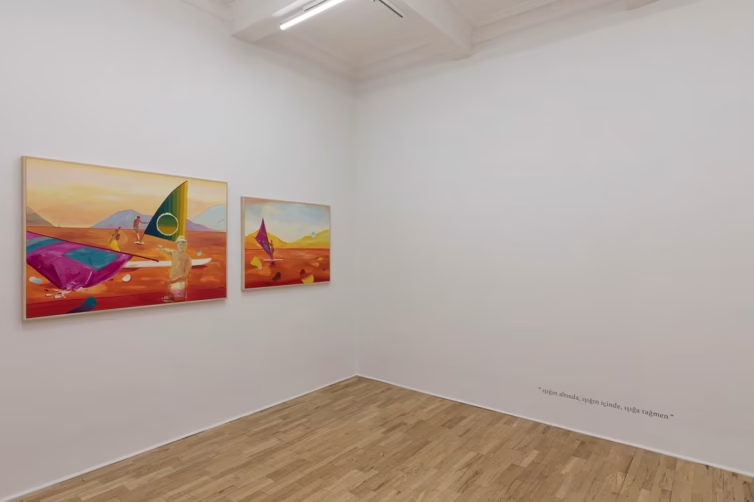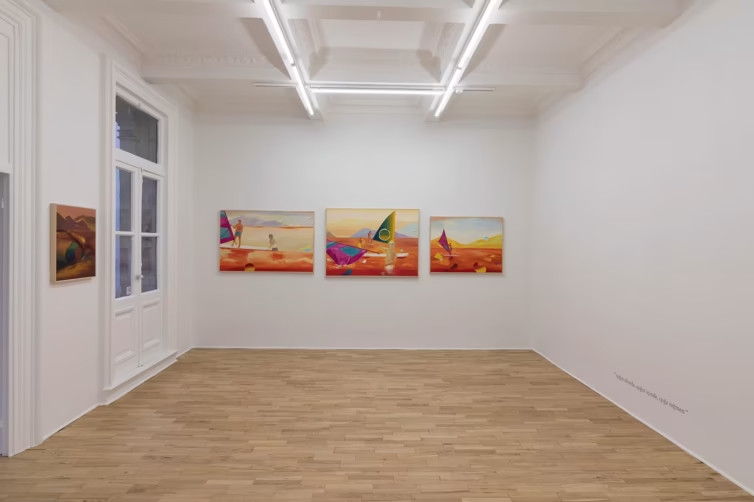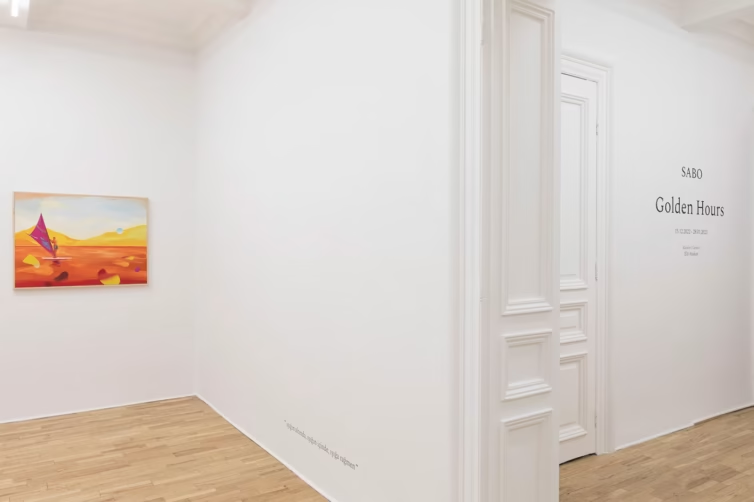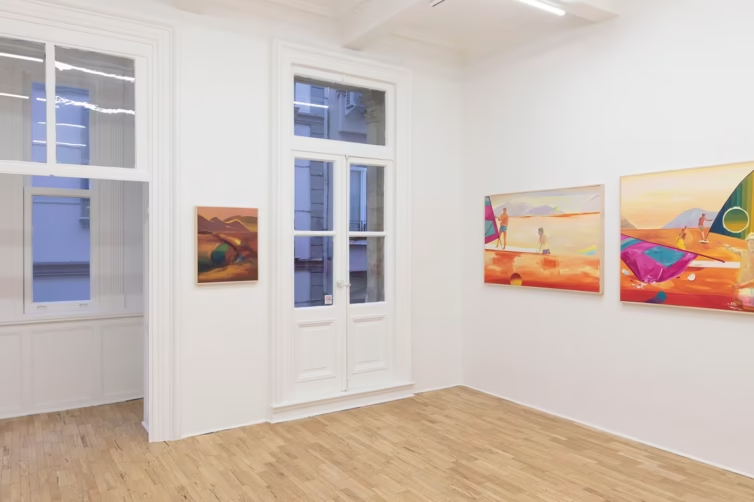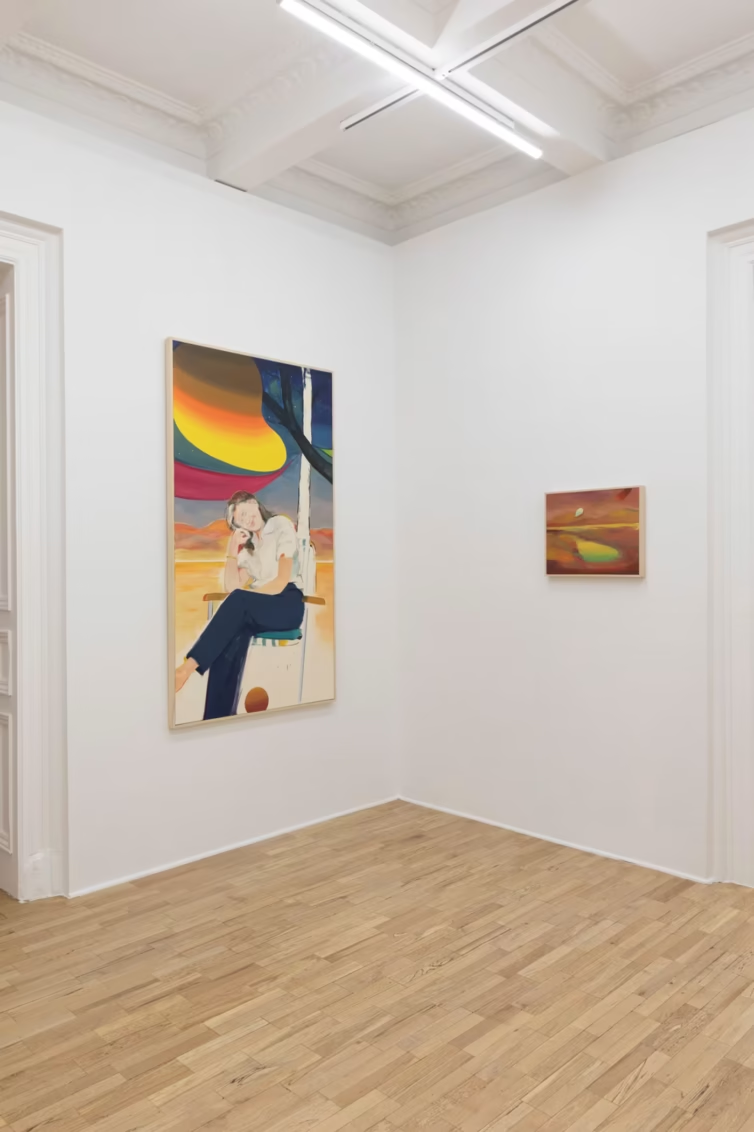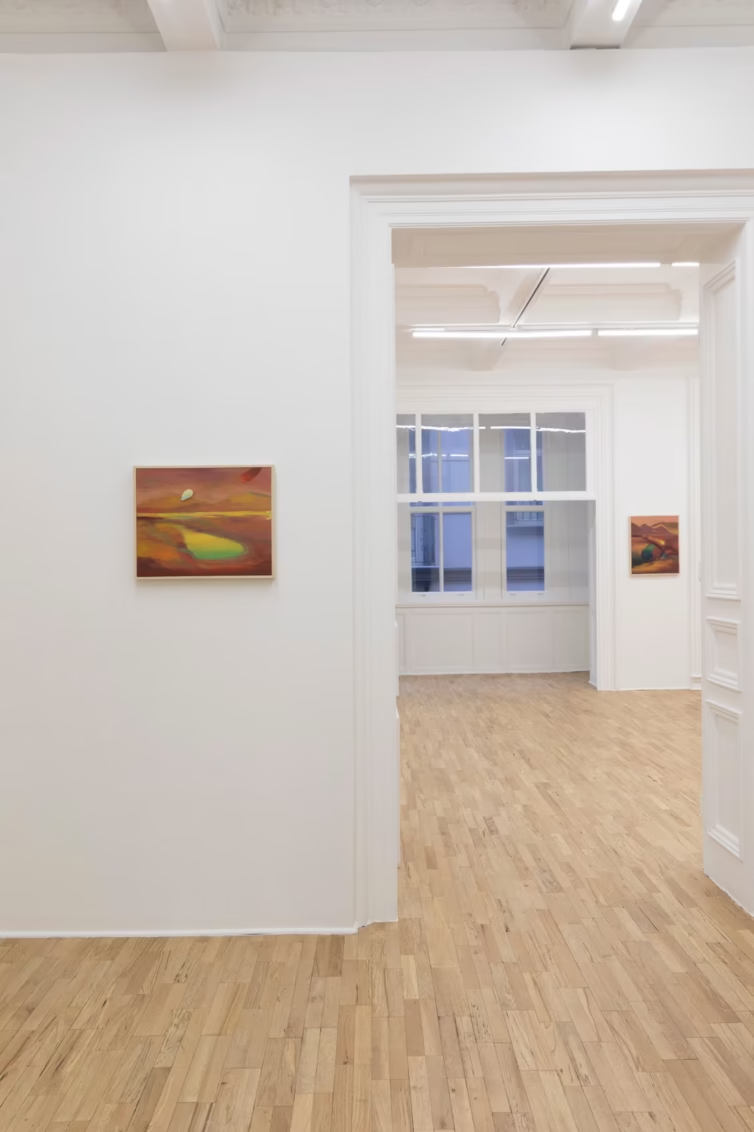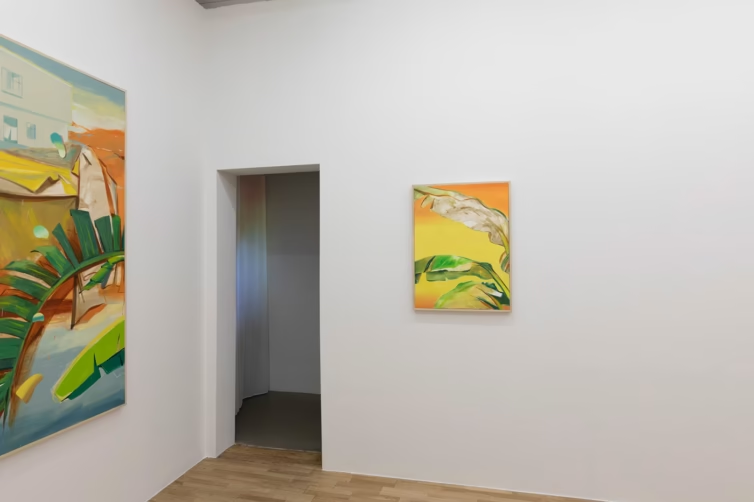exhibition
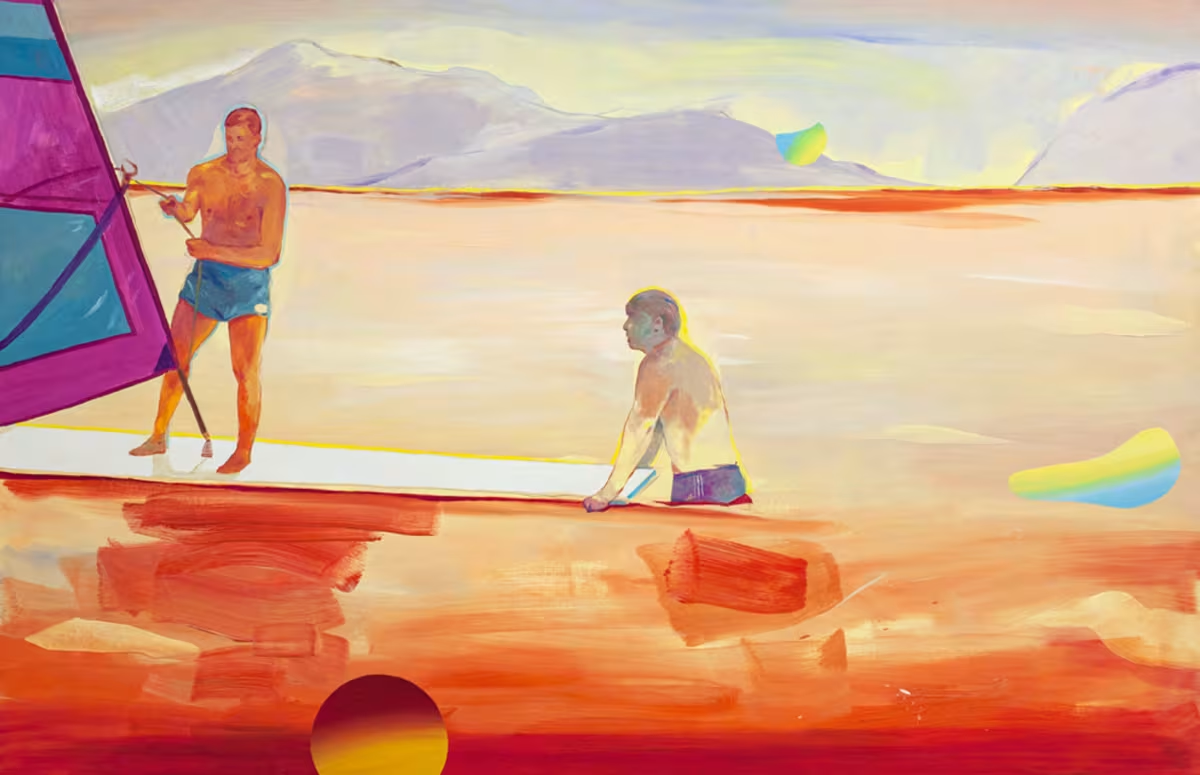
Oil on Canvas, 86.5 x 133.5 cm
news about
Curatorial Statement
Imagine yourself walking on a red canvas. The sun washing the sea and the sky with crimson. This undefined place where figures in apparent joy cast shadows is simultaneously forbidding and soothing. All the figures seem strangely intoxicated in a mirage of lightness. They are as unafraid of touching one another’s skins as they are of becoming invisible one day.
You are now where the clocks seem disoriented, in a blinding wash of white with the sun at the peak, in a pool where nothing is identifiable. And all this unidentifiability is inside you. Under, inside, despite the light, on the desolate street, or perhaps on the balcony, you are mulling the passage of time, with your legs extended. Your day turns to night, your noon to dusk. You hide, with all your colors, behind imagined compassion and a hidden passion.
Put aside all that is in your hands, all the thoughts in your mind, and picture the beach that extends in front of you, where the sun fades towards darkness. The warm mother who was touching your bones a moment ago is now gone. In the pitch dark, the people surrounding you slowly turn into sound. We have all witnessed that red glow as it set moments ago. Now, we are left alone with the reality of being made of flesh, bones and skin, in the absence of our warm mother.
In the arms of this reality, this darkness, we are quietly waiting, with hope, for the night to arrive, and for the stars to blossom over us.
Elâ Atakan’s letter to SABO Monday, 31 October, 2022
In the exhibition titled Golden Hours, SABO brings the loving, compassionate light of moments of happiness to his canvases. These works, where light finds a different expression every time, bear traces of the artist’s two previous exhibitions at Versus Art Project, Paracetamol and Time Machine. The dizzying effect of the colors in Paracetamol, the narrative displaced through fictional time in Time Machine, are replaced here by a more subjective narrative, by moments, memories of peace which the sun illuminates in different angles.
In Golden Hours, the artist expresses the traces of a compassion that wraps one up under the covers on sleepy mornings, that strikes the strands of a mother’s hair, that filters through the balcony awnings in summer afternoons, that runs in the whiteness of bedsheets, that reflects on and through water, that rises and sets behind mountains, blessing us, in the form of abstract droplets. He depicts vignettes from a life familiar but unrealized, pursuing happiness, in a dream of lightness, in non-existing spaces.
The golden hours in which the Sun warms us inside refer to an idealized period through which time is flowing, as well as evoking an imaginary space. The substrate of this imaginary space is light, and its various states. As we go down to the symbolic roots of light, remembering our most primal urges, we go back to the times when humanity worshipped the Sun against the darkness of the universe. In the Ancient Greek tradition, light is identified with gold, as an expression of the sun with its plentitude and benevolent traits. Possessing the sparkle of light, gold plays an important role in alchemy. The transformation of lead into gold also symbolizes an alchemy of the spirit, the redemption of humanity, the sign of rebirth.1
In this exhibition, the notion of rebirth also guides the artist in arriving at the idea of light. While designing this exhibition, the artist has imagined the reflections of light perceived by a baby in the mother’s womb from behind the curtain of the mother’s skin. Going through his family albums, he has found traces of this warm and benevolent feeling in his own history, in a photograph of his mother sitting on the balcony. In this photography, which has inspired the work titled Lucky Me, the harsh, yet pleasing light that strikes her mother’s face, dazzling her, has formed the basis of the overarching sentiment of the exhibition. In this work, the artist’s mother is in the void of space, in an unidentified place where night and day mix into each other, a place where everything is possible. In Timaeus, one of his late works, Platon makes mention of the idea of a female Khôra [χώρα] reminiscent of the womb: “the containing mother and nurse of all things”, Khôra denotes both part of the polis and a territory, and the material substratum out of which all things are born.2
Starting from this first seed he plants in the exhibition, SABO pursues moments of happiness which may or may not have been lived in the past. Recognizing that one more often finds inner peace on holiday, on the countryside, at sea, and in nature, and uses this emotional state to constitute the infrastructure of his works. In the work titled Is There Someone Else?, three figures, whose emotional kinship can be felt, who may be friends, father and son, or brothers, look at us. Under a makeshift tent with its warm yellow hue, in nature, in water, on the verge of reality, they are in peace. The buildings behind them, in contrast with the disaster-struck, demolished houses in the artist’s earlier works titled Tsunami and Tornado, bear the promise of benevolence. Time Flies, which accompanies this work, with its leaves that are reminiscent of wings in flight, shed light on the permeability of the notion of time denoted by SABO.
Looking closely at the architecture built by the artist in the exhibition, we can see the traces of a lived, optimistic golden age. In the self-explanatory works in the Light Leaks series, the awnings fluttering in a tranquil balcony and the streets, buildings seen through them can take us to the long summers of childhood, to moments when time seems to flow slowly and compassionately.
In Golden Hours, the artist adds a new layer on top of his works, depicting abstract fields reminiscent of water droplets that scatter over the canvases, which he terms light leaks. According to the artist, these specks are gateways through which he slips into the golden moments that he has designed, in which he is not present. In addition to creating a depth of meaning, the abstract fields SABO uses in this exhibition bear clues as to his technique. In the series titled In Your Eyes, he has applied his collage technique to the canvas. Here, the artist finds a happy photograph taken long before he existed, showing members of his family by the seaside in unaccustomed poses, and notices that there is a recent photograph of himself taken at the same location as well. For him, these two photographs denote a lapse of time, and through collages, densely painted abstract fields, the artist embarks on a journey between these two times.
It is not a coincidence that the places depicted by SABO in this exhibition are by the waterside, next to the sea, or pools. Constituting a reference to the womb, the seed of the exhibition, water is also arguably the best reflector of light, and the finest companion of the moments of happiness defined by the artist. In the works in this exhibition, the artist depicts water through a variety of brush and paint techniques. In the series titled Savior, the artist leaves the faces of the figures indistinct, depicting the ambiguity, movement, joy of the sea with free brush strokes that have left traces, while painting the water in the pool in Fever Dream as densely as the abstract fields he refers to as light leaks.
The artist has depicted the pool in Fever Dream with a feeling that can only be perceived through a certain kind of perception beyond the sense of the visual. This work is reminiscent of the description of a pool in Eye and Mind3, the last work penned by Maurice Merleau-Ponty in Le Tholonet in Provence, France in the summer of 1960: “I cannot say that the water itself—the aqueous power, the syrupy and shimmering element—is in space; all this is not somewhere else either, but it is not in the pool […] This inner animation, this radiation of the visible, is what the painter seeks beneath, the words depth, space, and color.” 4
In this book, Merleau-Ponty argues that the philosopher and the painter are engaged in the same inquiry, that they both investigate wild, silent, conceptless essences5, and attempts to develop a new philosophy of seeing. The works that undergo a transformation in Monastery, the final series of SABO’s exhibition, are the result of a new alchemy in the artist’s oeuvre. This series bears the story of the Monastery cove near the seaside town of Didim, where the artist has spent his summers in his childhood. In this cove, which is only accessible through narrow paths, the Sun disappears before it sets completely, but all the colors of the sunset linger around the cove for a long time. Once all the reflected lights disappear, absolute darkness takes over. The artist describes the darkness after this dizzying moment, the brightness of the stars in the sky, and the magical feeling of being left alone with the voices of those around him. In these works, the artist takes down the wild, silent and conceptless essences through a freeform abstractness, and the specks of light hanging in the air perhaps herald the seed in Khôra, the light in the mother’s womb.
“The eye accomplishes the prodigious work of opening the soul to what is not soul—the joyous realm of things and their god, the sun.[…] We must take literally what vision teaches us: namely, that through it we touch the sun and the stars, that we are everywhere at once, and that [we even possess] the power to imagine ourselves elsewhere.” 6 In these works, where he imagines himself in moments of happiness, SABO embarks on this journey of insight described by Merleau-Ponty. And with this exhibition, he invites us to a dream of lightness in the shadow of the golden age of the past, to healing, with the hope that his light bears.
Text by: Elâ Atakan
English translation: Murat Güneş
